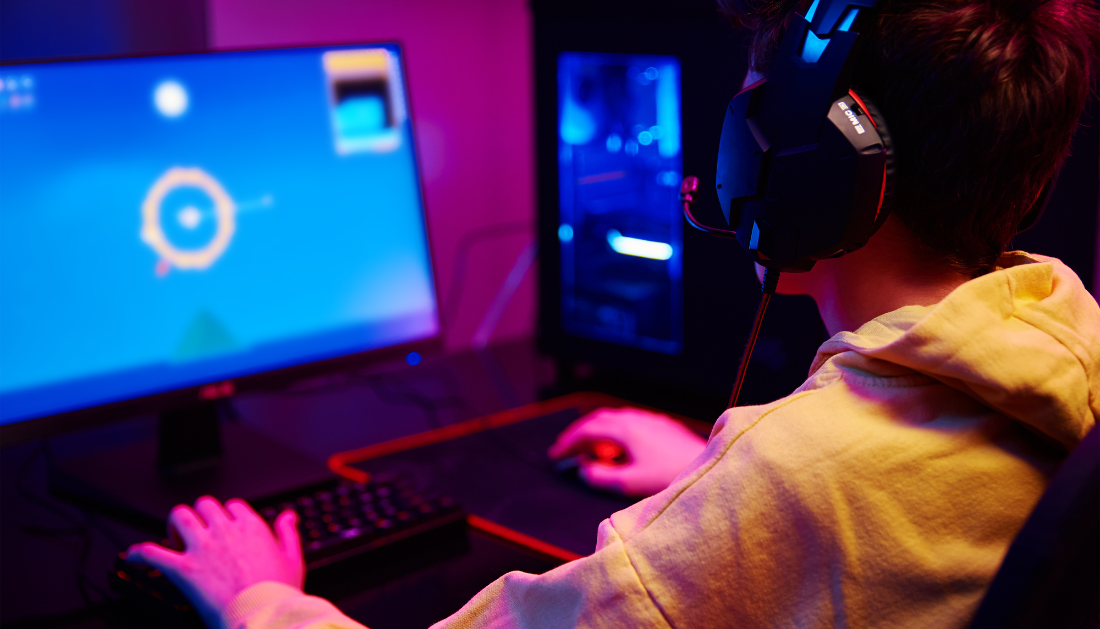

Gaming and Brain Structure: What MRI Scans Reveal
A recent study published in Brain Science examined whether long-term engagement with action video games is associated with changes in brain structure, particularly in regions related to attention and visuospatial processing.
Using advanced MRI techniques, researchers compared 27 habitual gamers, playing at least five hours weekly for a year, with 19 non-gamers. They discovered that gamers had greater cortical thickness in right parietal brain regions and stronger occipito-parietal white matter connectivity, which are linked to visual processing, decision-making, and sensorimotor coordination.
However, researchers emphasized that the findings do not confirm that gaming causes these changes, only that a strong association exists.
Explore All Neurology CME/CE Conferences and Online Courses
Study Design and Key Findings on Action Video Games and Brain Structure
Participants underwent high-resolution MRI scans and diffusion imaging to assess both gray matter and white matter pathways.
Cortical Thickness: Gamers showed increased thickness in the inferior and superior parietal lobules, precuneus, and supramarginal gyrus, with near-significant effects in the postcentral gyrus.
White Matter Connectivity: Higher quantitative anisotropy (QA) values were observed in dorsal-stream pathways, indicating stronger connectivity between occipital and parietal regions.
These structural differences align with the demands of action gaming, which requires rapid spatial awareness, precise motor control, and quick decision-making.
Implications for Attention and Cognitive Health
The study suggests that frequent gaming may be linked to enhanced visuospatial and attentional networks, offering potential cognitive benefits. Such findings could have applications in cognitive training programs for individuals with attention deficits or visuospatial impairments.
However, the researchers highlighted key limitations:
- Cross-sectional design, preventing conclusions about causality.
- Self-reported gaming history which may introduce bias.
- Modest sample size and lack of functional or behavioral assessments.
Further longitudinal research is needed to determine whether gaming actively strengthens these pathways or if individuals with naturally stronger visuospatial networks are more drawn to action gaming.
Conclusion
The results indicate a strong link between action video games and brain structure related to attention and visuospatial skills. While promising, these findings should be interpreted cautiously. Future studies may reveal whether gaming could serve as a non-invasive tool for cognitive training in healthcare settings.
For More Information:
Mukherjee, C., Cahill, K., Dhamala, M. (2025). Action Video Gaming Enhances Brain Structure: Increased Cortical Thickness and White Matter Integrity in Occipital and Parietal Regions. Brain Science. DOI: 10.3390/brainsci15090956. https://www.mdpi.com/2076-3425/15/9/956
more recommended stories
 36-Week Pre-eclampsia Screening May Reduce Term Risk
36-Week Pre-eclampsia Screening May Reduce Term RiskA New Preventive Strategy for Term.
 Cardiovascular Risk and Sudden Cardiac Death in Diabetes
Cardiovascular Risk and Sudden Cardiac Death in DiabetesRising Sudden Cardiac Death (SCD) Risk.
 Engineered Herpes Virus for Glioblastoma Immunotherapy
Engineered Herpes Virus for Glioblastoma ImmunotherapyA Powerful New Direction in Glioblastoma.
 Poor Kidney Function and Alzheimer’s Biomarkers Explained
Poor Kidney Function and Alzheimer’s Biomarkers ExplainedPoor kidney function may influence levels.
 Walking Speed Before Hip Replacement Predicts Recovery
Walking Speed Before Hip Replacement Predicts RecoveryNew Evidence Points to a Simple,.
 Neuroblastoma Drug Combo Extends Survival in Models
Neuroblastoma Drug Combo Extends Survival in ModelsA Promising Shift in High-Risk Neuroblastoma.
 How Soybean Oil Impacts Weight Gain and Metabolism
How Soybean Oil Impacts Weight Gain and MetabolismWhy Soybean Oil May Affect Metabolism.
 Coffee and Cognitive Function: Evidence Review
Coffee and Cognitive Function: Evidence ReviewA new narrative review in Cureus.
 Colorectal Cancer Screening Rates Low in Adults 45–49
Colorectal Cancer Screening Rates Low in Adults 45–49Recent UCLA research reveals that colorectal.
 Gut Immune Cells and Long-Lasting Antiviral Protection.
Gut Immune Cells and Long-Lasting Antiviral Protection.Breakthrough Findings on How Gut Immune.

Leave a Comment